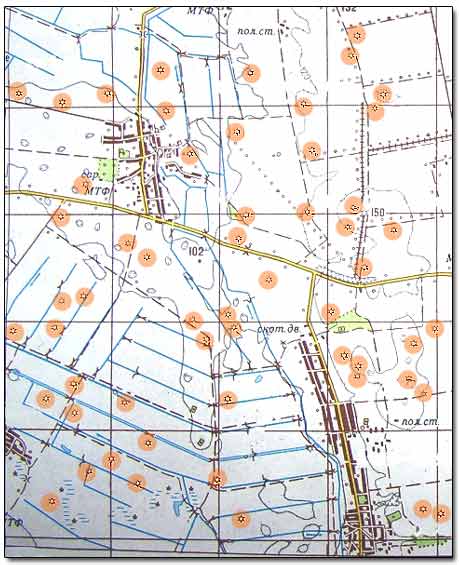Ancient Burial-Mounds - What Happened There?
In the areas around the Dnieper river, archaeologists classified tumuli according to
their date of construction. Basically there are four types of the burial-mounds:; G-4: $, EF-40: $
. 1)
Until 600 B.C. - Stone Age burials that contain just a few artifacts.
2) 600 BC - 100 BC - Scythian (Skiff) Period. The burial's artifacts do not include glass and silver.
3) 100 BC - AD 400 - Burials included a cremation (with burnt ashes inside the burial chamber) - a Roman tradition adopted by Slavic tribes. The burials contain many gold and bronze relics.
4) AD 400 - AD 1050. The burial-mounds contain the horse remains and weapons. The iron and silver artifacts prevail in these kurgans.
Some kurgans would include both the burnt ashes and unburnt skeletons. In some cases, the burial-mounds would be surrounded by wood logs or panels. If a military action took place near the burial-mounds, the casualties were buried right in them, in addition to the dead buried many centuries ago.
Scene of An Ancient Burial
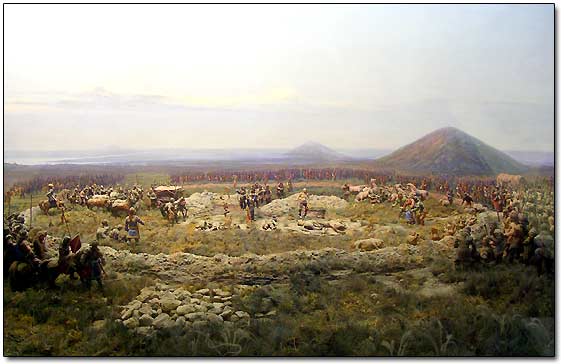
The process of non-crematorial burying was conducted as follows:
A hole, with dimensions of 2m x 1,5m x 1m, was dug and laid with wood logs or boards. All things necessary for the deceased in the afterlife were prepared to be buried along. They included a few jugs and pots with food and water, a horse and other animals, coins, jewelry and weapons.
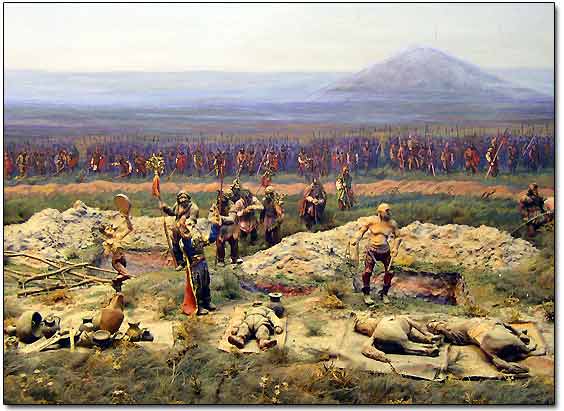
The Best Warriors Gathered To Lament
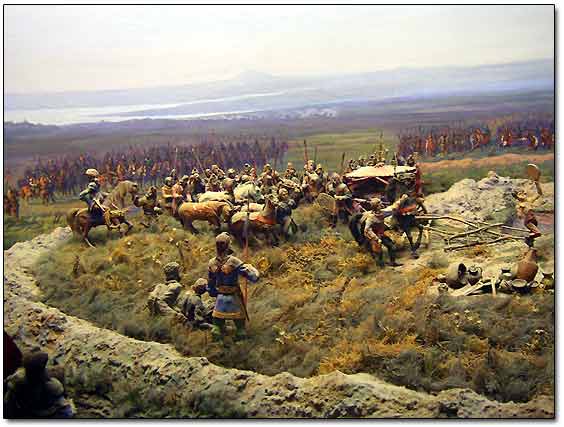
Then the deceased was laid into a mortuary enclosure along with the "grave goods." A layer of wood logs was placed over the hole, and then was covered with turf. A small barrow was made on top of the grave. A band of twelve (or more) of the best warriors rode around the barrow, singing dirges in praise of their lord. All participants and the widow also lamented the death of their lord.
A Widow Is Singing Her Dirge
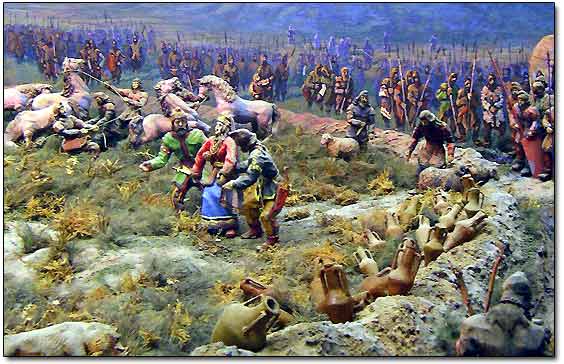
Then it was time for a commemorative feast. The food was cooked right at the spot, but the participants did not eat it right away. They were observing the steam raising up from the food - a representation of the deceased's spirit, until the food was cold.
A small piece of meat was thrown on the barrow, and a full jug of beverage was also emptied onto the mound. After everybody ate and drank, all plates with left-overs were placed on the mound for the poor, single, destitute and the dogs, it did not matter.
The final construction of a burial-mound was finished on the next day, with all plates and pottery left from the previous day being buried inside. The second commemorative feast took place in 40 days. The fires were made and the food was cooked on top of the barrow. And again, everything that was left from that feast was buried in the mound. That is why the archaeologists recover numerous pieces of pottery and layers of ashes throughout the volume of the burial-mounds. If the burial included a cremation, the body was burned on a pyre that was built either on a flat surface or in the grave. The burial-mound was built on top of the pyre.
Excavating of the burial-mounds is illegal and punished severely by law. Nevertheless, hundreds of people called "black archaeologists" destroy the kurgans and steal all "grave goods." They do not use metal detectors. With a few moves of a bulldozer, they raze the mound to the ground. Then they sift the soil through a set of screens recovering the valuable artifacts. If these thieves discover an exquisite gold work, one night of such labor earns them $500,000 - $1,000,000.
As a result of this massive illegal activity, lots of valuable artifacts have been transferred into the private collections, both domestic and foreign. The government tried to stop this looting by enacting a law, but, as usual, the law hit hard only metaldetectorists like us who would never touch a burial-mound. The "black archaeologists" were not affected by the ridiculous law and still continue their devastating activities.
Unfortunately, the police does not have enough manpower and resources to reinforce the law. It is impossible to patrol the vastness of rural areas that contain hundreds of burial-mounds. Here is an example - a fragment of the topographical map showing the kurgans scattered in the area.
All burial-mounds Are Marked with Orange
